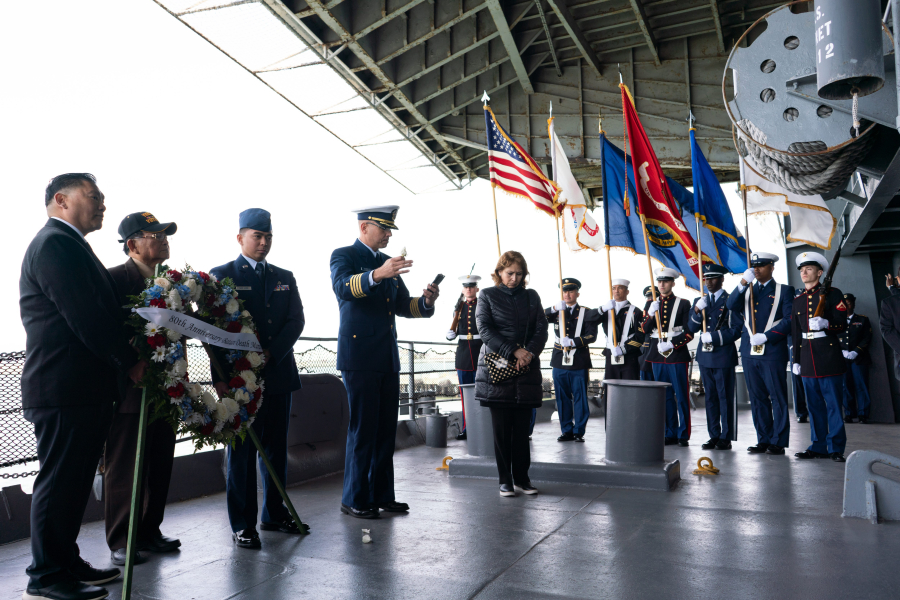Gaerlan says she started the Bataan Legacy Historical Society in 2012 because her father, Luis Gaerlan Jr., was one of the POWs who was forced to take part in the Bataan Death March. The organization presented Sunday’s event at the USS Hornet with the Philippine Scouts Heritage Society and the American Defenders of Bataan and Corregidor Memorial Society.
The setting for the event had vast historical significance, given that the USS Hornet (CV-12) — the eighth vessel to carry the Hornet name — was such a significant participant in the Pacific theater during World War II. It was part of the Battle of Leyte Gulf, which happened in the waters of the Philippian Islands and is generally considered to be the largest naval battle of all time. The battle was a major turning point in the Pacific War, as some 800 Allied Forces ships overpowered a vastly smaller Japanese fleet in late 1944.
The history of the USS Hornet also factored into a panel discussion at Sunday’s event, focused on the bombing of the unmarked Japanese “hell ships” Oryoku Maru and Enoura Maru. The Air Group 11 (CVG-11), which was stationed on the USS Hornet, led the attacks, which resulted in the “friendly fire” deaths of huge numbers of Allied POWs.
The event also included a memorial ceremony, keynote speech from Vice Admiral Michael McAllister, commander of the U.S. Coast Guard, and performances of both the Philippines and U.S. national anthems. The centerpiece was the tolling of the bells in honor of those who paid the ultimate sacrifice during WWII in the Philippines.
Although exact figures are not known, it’s estimated that 5,000-10,000 Filipinos and 250-650 Americans lost their lives during the Bataan Death March — with another 20,0000 Filipino and 1,600 American deaths to follow in death camps.



